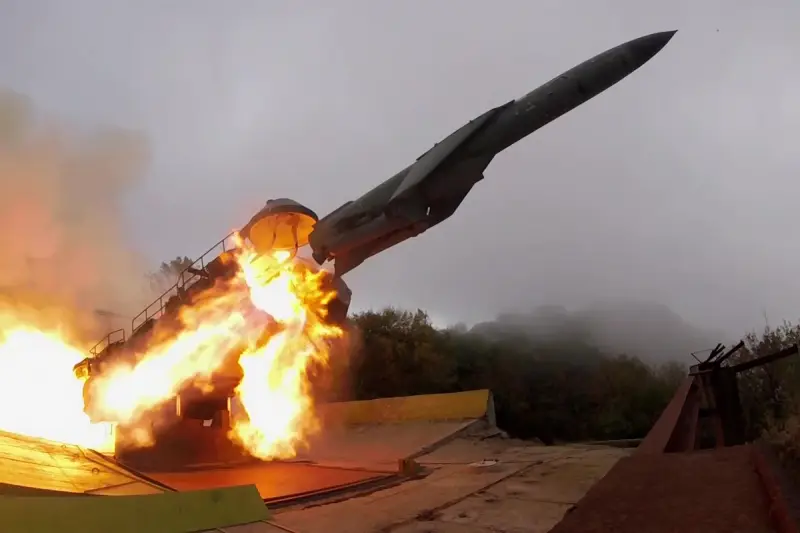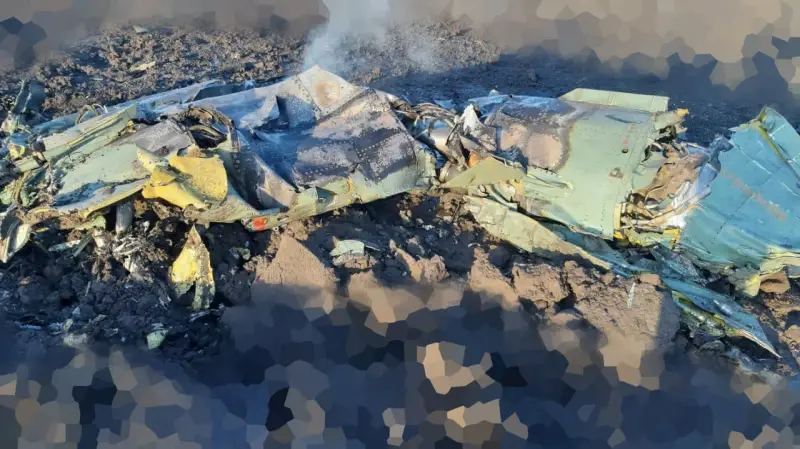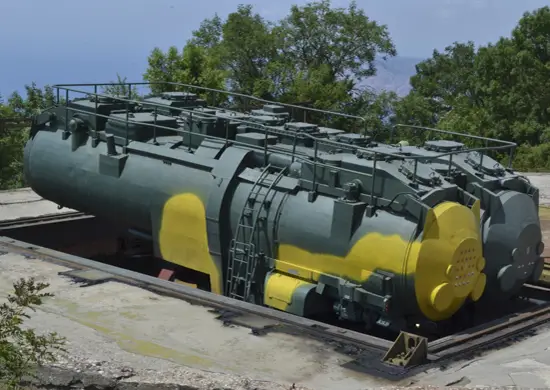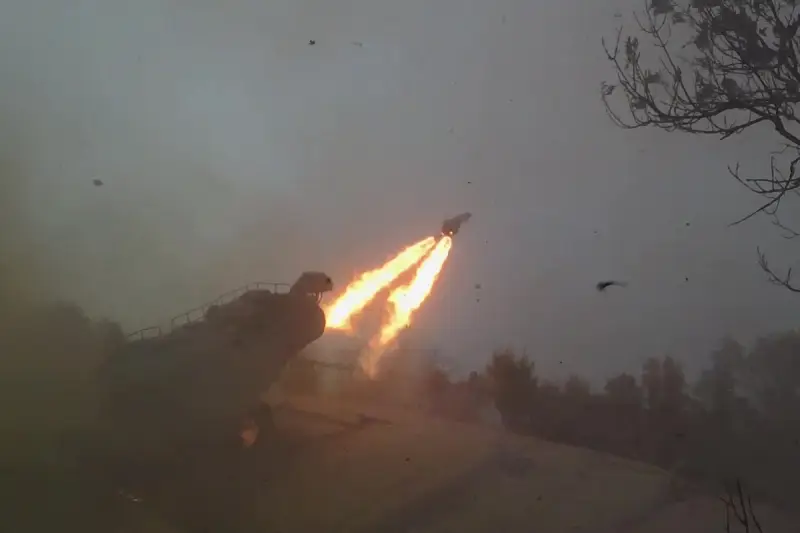3M44 Progress missiles in Special Operations

Launch of a 3M44 rocket from the launcher of the Utes / Object 100 complex
To force the forceful demilitarization of the Kyiv regime, the Russian armed forces use a wide range of missile weapons, both modern and quite old. For example, in mid-January it became known that anti-ship missiles of the P-35 family were used in another attack on Ukrainian targets. These products are not new and are quite old, but they are quite capable of showing good results.
According to various sources
In mid-January, the Ukrainian side complained about another Russian missile strike, and also revealed some of its features. Having studied the debris of the incoming ammunition, the enemy assumed that it was attacked by P-35 anti-ship missiles or their later version 3M44.
As evidence, photographs of some smoking debris were published. In the pile of metal, it was difficult to recognize the individual elements of the P-35 product. At the same time, the photographs did not make it possible to determine the location and date of the shooting, the results of the strike, etc.
Soon data appeared from the Russian side. January 20 RIA News published details of this missile attack obtained from an unnamed informed source. The source said that our missilemen actually used the P-35B anti-ship missiles. Several such products were launched at Ukrainian air defense positions in the Odessa region. The targets were successfully hit.
The source recalled that the P-35 family of missiles have not been produced for a long time, and their modernization does not make sense. In this regard, in the recent attack, anti-ship missiles were used in their original configuration, equipped with analog control devices and a standard television and radio command system. Despite the obsolescence of such devices, the missiles have shown good efficiency.

Alleged wreckage of Progress on Ukrainian territory
The source did not disclose the organizational and technical details of the missile strike. In particular, the number of missiles fired is not reported. At the same time, it can be assumed that not all products reached their goals. At least one missile fell on enemy territory - for technical reasons or due to the impact of its air defense. However, the rest of the anti-ship missiles coped with the task.
About two months have passed since the first use of P-35 family missiles in the Special Operations. No new live firings of this kind have yet been reported. Perhaps the reasons for this lie in the lack of suitable goals. In addition, missile systems and their ammunition are not new, and their further use may simply not make sense.
Decades of service
The P-35 missile can be considered one of the oldest weapons used in the current Special Operation. Work on the basic version of this product began in the mid-fifties. The future P-35/4K44 missile was created at OKB-52 by V.N. Chelomeya (now NPO Mashinostroeniya, Reutov) as a deep modernization of the existing P-5 anti-ship missile system. At the turn of the decade, the new missile was tested and entered service in 1962.
Initially, the 4K44 anti-ship missile system was weapons warships. Its main carriers were missile cruisers of projects 58 (2 launchers with 4 missiles each; ammunition - 16 anti-ship missiles) and 1134 (two twin launchers with 4 missiles) - 4 units each. each type. By the mid-sixties, on the basis of the P-35, the P-6 anti-ship missile system was developed, intended for submarines pr. 651 and pr. 675 - a total of 45 pennants.
At the same time, two coastal systems with a modified P-35B missile were being developed - the self-propelled Redut and the stationary Utes. Self-propelled ballistic missiles were built in a fairly large series and entered service with a number of units of the coastal forces of the Navy. The stationary complex was built in two copies. The so-called appeared in Crimea. “Object 100” consisting of two divisions and a pair of launchers. A similar “Object 101” was built on the island. Kildin in the Barents Sea. The operation of the two “Utes” began in 1972-75.

In 1982, the deeply modernized 3M44 Progress missile was put into service. It differed from the basic P-35 in modern instruments, increased noise immunity and the presence of new flight modes. Due to these innovations, it was possible to increase the probability of hitting typical surface or coastal targets that have appropriate protection.
In the late eighties and early nineties, all surface and underwater missile carriers of the P-35 family were withdrawn from the Navy's operational service. The reason for this was the obsolescence of ships and missiles, as well as the lack of necessary funding. As a result of these events, 3M44 missiles remained in service only with coastal troops.
DBK "Utes" on the island. Kildin continued to serve until 1995, after which he was removed from duty and from service. The regiment responsible for its operation was disbanded. The technical equipment was partially exported “to the mainland.”
Crimean "Cliff" under the agreement on the division of the Black Sea fleet went to Ukraine. The operation of this complex was not planned, which led to understandably sad consequences. One of the divisions was simply abandoned and it was stolen. The second one was preserved, which contributed to its preservation.
When Crimea was returned to Russia in 2014, the remaining Utes complex came under the control of the KChF coastal troops. Reactivation work soon began, culminating in 2016 with a successful training launch of the Progress rocket. Subsequently, the crew of the DBK repeatedly participated in various exercises and carried out firing. Basically, it provided a target environment for air defense training - 3M44 missiles were used as heavy supersonic targets.

The Utes launcher in the process of being lifted into firing position
After the start of the Special Operation, any information about the operation or combat use of the Utes ballistic missile system with the Progress anti-ship missile system did not appear for almost two years. The first news of this kind arrived only in the middle of last January. As it turned out, the complex is ready for operation and is capable of solving combat missions. At the same time, the enemy no longer has a surface fleet, and anti-ship missiles have to be used against targets on land. However, such a blow also showed the desired effectiveness.
Heavy class product
The 3M44 Progress product is a heavy anti-ship cruise missile. It is built according to a normal aerodynamic design and has an elongated, streamlined fuselage with a characteristic air intake under the bottom. There is a folding swept wing and a small-span tail unit. The total length of the 3M44 reaches 9,75 m with a launch weight of 4,2 tons.
The rocket is equipped with a turbojet engine and has a pair of launch boosters. The flight is carried out at a speed of 1,5 M. The launch range for later products of the family reached 350 km. Flight altitude, depending on the chosen profile, is up to 7 km.
The missile has a combined control system. The main part of the route follows the commands of the missile system, which controls the movements of the target and anti-ship missiles. At a distance of approx. 50 km from the target, the active radar homing head is turned on, providing search and destruction of the target. Progress differs from its predecessors in improved noise immunity, the ability to select a priority target, new flight profiles that reduce the likelihood of interception, etc.
The large launch mass made it possible to equip the rocket with a heavy warhead. 3M44 carries a 560 kg high-explosive shaped charge. In addition, products of the P-35 family could be equipped with a special warhead with a power of up to 15-20 kt.

Rocket launch during an exercise
DBK "Utes", located in Crimea, is an underground structure with premises for a command post, storage and transportation of missiles, etc. The launcher is also mounted underground and rises to the surface through a sliding roof before launch. The division's launcher carries two missiles with the ability to launch sequentially. Radar means for illuminating the surface situation and other devices are also mounted on the surface.
Retained Potential
The Utes coastal complex and its 3M44 missiles are not new, and have now lost a significant part of their original potential. Nevertheless, even now they can find application in solving certain problems. As always, competent organization of combat work allows you to obtain maximum results and neutralize negative factors. The January attack on Ukrainian air defense facilities once again confirms this rule.
The strengths of the 3M44 Progress missile are its high performance characteristics and heavy warhead. Intercepting such an air target can be a difficult task for outdated air defense systems, which form the basis of the air defense of the Kyiv regime and a number of other foreign countries. In this case, a missile that breaks through due to its heavy warhead causes serious damage.
An obvious drawback is the anti-ship missile electronics, built on technologies from the seventies and eighties. For its time, it was effective and protected from interference, but the ability to operate normally when countered by current electronic warfare systems is not guaranteed. However, the enemy may not have such means, and then the missile will cope with its task.
Perhaps the main disadvantage of Utes is its stationary design. Because of it, 3M44 missiles can only be used in one area, covering only part of Ukrainian territories and facilities. In this regard, the old DBK is inferior to modern mobile systems and other missiles on other platforms.
However, as practice shows, even an outdated model with a number of objective limitations can contribute to achieving common goals. It is unlikely that the use of Utes and Progress will be regular and frequent, but even the very fact of the presence of such instruments has a positive effect on the strike capabilities of the Black Sea Fleet and the armed forces as a whole.
Information